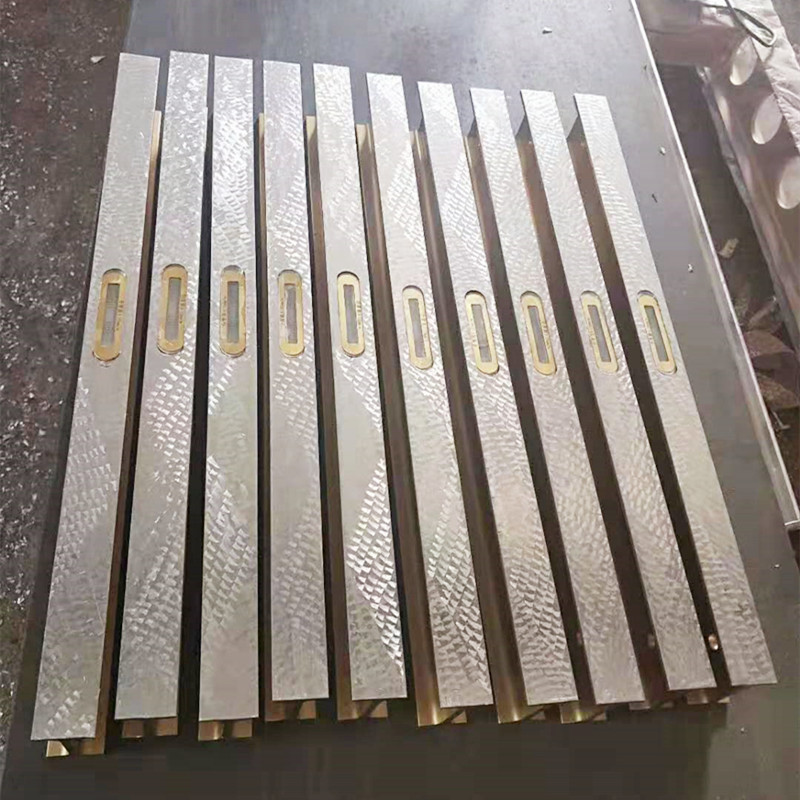Aug . 21, 2024 13:44 Back to list
Using a Thread Ring Gauge for Precision Thread Measurements and Inspections
The Importance of Thread Ring Gauges in Quality Control
Thread ring gauges are vital tools used in various industries to ensure the precision and quality of threaded components. As the name suggests, these gauges are designed in the shape of a ring and feature internal threads that correspond to specific sizes and tolerances. Their primary function is to check the external threads of a workpiece, ensuring that they meet the required specifications. In this article, we will explore the significance of thread ring gauges, their applications, and best practices for their use.
Understanding Thread Ring Gauges
Thread ring gauges come in two primary types go gauges and no-go gauges. A go gauge is used to determine whether a threaded component is too large, meaning the threads can engage correctly. Conversely, a no-go gauge checks for excessive thread size, ensuring that the threads will not engage if they exceed the specified measurement. Together, these gauges provide a complete evaluation of a thread’s compliance with industry standards.
The gauges are manufactured to precise standards, often following the guidelines set by organizations such as the American National Standards Institute (ANSI) or the International Organization for Standardization (ISO). This standardization ensures that the gauges are reliable and that they provide consistent results across different production runs and manufacturing facilities.
Applications in Various Industries
Thread ring gauges find extensive use across numerous sectors, including automotive, aerospace, oil and gas, and manufacturing. In the automotive industry, for instance, the integrity of threaded connections is crucial for safety and performance. Using thread gauges helps manufacturers ensure that components like bolts, nuts, and fittings meet stringent safety regulations.
In the aerospace industry, where even minor deviations can lead to catastrophic failures, thread ring gauges are indispensable. They are employed in the production of critical components such as engines and landing gear, ensuring that all threaded connections are secure and capable of withstanding high stress and loads.
thread ring gauge is used for checking

Similarly, in the oil and gas sector, where equipment operates under extreme conditions, the accuracy of threaded connections is vital
. Here, the use of thread ring gauges guarantees that components can withstand high pressures and environmental challenges, maintaining the integrity of pipelines and drilling equipment.Best Practices for Using Thread Ring Gauges
To effectively utilize thread ring gauges, manufacturers should adhere to several best practices. First, it is essential to ensure that the gauges are calibrated regularly. Regular calibration helps maintain accuracy and ensures that any wear or damage does not compromise the gauge's performance.
Second, personnel using thread ring gauges should be adequately trained to understand how to use them properly. Improper use can lead to inaccurate measurements, which can cascade into significant quality control issues.
Additionally, it is crucial to store thread ring gauges properly. They should be kept in protective cases to prevent physical damage and contamination, which can affect their accuracy. Also, gauges should be kept clean; dirt or debris can interfere with the measurement process, leading to faulty conclusions.
Conclusion
Thread ring gauges play a critical role in modern manufacturing and quality control processes. By ensuring the accuracy and quality of threaded components, these gauges help industries maintain safety and reliability in their products. As technology continues to advance, the role of these gauges will only become more significant, underscoring the need for diligent calibration, proper training, and best practices in their use. By prioritizing quality assurance through thread ring gauges, industries can enhance product performance, reduce failures, and ensure customer satisfaction.
-
Thread Plug Gauge Our Promise of Measurement ExcellenceNewsAug.22,2025
-
Gauge Pin Class Reflecting Quality LegacyNewsAug.22,2025
-
Check Valve Types for High Rise BuildingsNewsAug.22,2025
-
Water Control Valve for Irrigation SystemsNewsAug.22,2025
-
Gate Valve with Soft Seal TechnologyNewsAug.22,2025
-
Y Type Strainer for Oil and Gas ApplicationsNewsAug.22,2025
Related PRODUCTS









